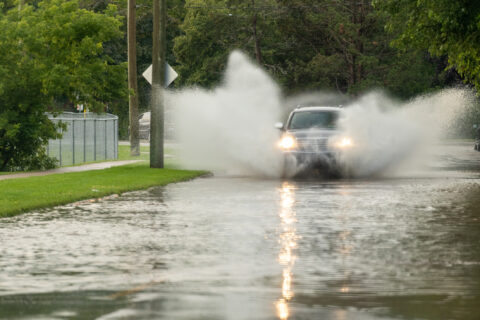As small business owners deal with rising utility costs, many are looking for ways to reduce energy use while also doing their part to limit strain on local power grids. To enhance energy efficiency, Chick-fil-A, Inc. is working with three restaurants in California to explore innovative ways to incorporate renewable energy into their operations.
This effort was most recently implemented in Oceanside, California, where Chick-fil-A Quarry Creek installed an on-site, solar-powered microgrid. This location is the third Chick-fil-A restaurant to test this innovative system, with two other locations already deploying the technology. In alignment with the company’s commitment to pursue what’s next, Chick-fil-A was the first quick-service restaurant to pilot a microgrid system designed for a 5,000 square-foot building.
How It Works
The SolMicroGrid™ technology uses solar panels and on-site battery storage to provide power for the pilot restaurants. Equipped with a smart microgrid control system, the project discharges automatically during periods of high demand — effectively replacing traditional grid-supplied power with sustainable solar power. The benefits are twofold: reducing the restaurants’ demand during peak periods and reducing both emissions and costs.
Pilot Results and Future Expansion
The Oceanside installation follows two earlier pilots. The first launched at Chick-fil-A March Lane in Stockton, California, in 2022, and the second at Chick-fil-A Mendocino Avenue in Santa Rosa, California, in 2024. The initial results are promising, with early data showing the microgrid systems can cover 30% to 40% of a restaurant’s energy needs.
Additionally, at these two locations, the microgrid system includes a generator to help prevent power-related disruptions, allowing the Restaurants to serve as safe havens for the community during grid outages.
The microgrid pilot will last through midyear, and then Chick-fil-A, Inc. will evaluate the results and consider plans for the future.
Part of a Broader Sustainability Vision
The pilot program is just one example of how Chick-fil-A engages in environmental stewardship. In alignment with the company’s corporate social responsibility commitment to care for the planet, more than 2,400 participating Chick-fil-A restaurants divert surplus food from landfills through the Chick-fil-A Shared Table® program, helping feed those in need in local communities. Additionally, restaurants have the opportunity to engage in composting programs, recycle used cooking oil and more.
Through these sustainable practices, Chick-fil-A embraces opportunities to be good stewards of the planet we share.
Visit the NLC Strategic Partnerships page to learn more about the organizations like Chick-fil-A dedicated to making NLC the premier resource for local governments.
Corporate Social Responsibility
Learn more about Chick-fil-A’s Corporate Social Responsibility, from its people to community to food.









